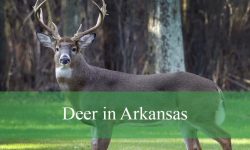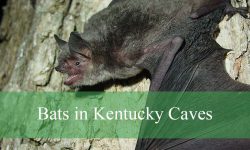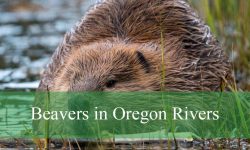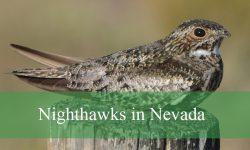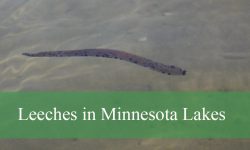Kissing bugs are among the most misunderstood insects in Arizona. Many residents see them only as strange, long-bodied insects that appear on porches during summer nights. Yet they carry a fascinating biology and a surprising ability to adapt to the deserts, suburbs, and mountainous areas of the state.
Their nickname comes from their tendency to bite near the lips of sleeping people. This behavior has created myths, fears, and confusion that overshadow the real ecological story behind these insects. In Arizona, kissing bugs play a far more complicated role than most people realize.
This article uncovers the hidden facts about kissing bugs in Arizona. Their behaviors, habitats, risks, and survival strategies reveal a world that most residents never encounter even when these insects live right outside their homes.
Understanding Arizona’s Kissing Bugs

What Kissing Bugs Really Are
Kissing bugs belong to the Triatoma genus. Arizona has several species including Triatoma rubida, Triatoma protracta, and Triatoma recurva. These insects are part of the Reduviidae family, which includes predatory assassin bugs.
Unlike most assassin bugs, kissing bugs feed on blood. They possess elongated heads, narrow bodies, dark wings, and bright orange or red markings along their edges. Their long mouthparts allow them to pierce animal skin and drink blood efficiently.
Why They Thrive in Arizona
Arizona’s desert climate provides perfect nighttime temperatures for kissing bug activity. Warm evenings support insect movement. Diverse wildlife such as packrats, dogs, rabbits, bats, and wild rodents serve as hosts.
The state’s combination of heat, dryness, rocky habitat, and abundant shelter makes Arizona one of the hotspots for kissing bug populations in the United States.
Where They Live
Kissing bugs prefer sheltered locations. In the wild, they hide inside packrat nests, rock piles, tree bark crevices, and burrows. In residential areas, they may be found beneath outdoor furniture, near porch lights, inside cracks, behind planters, or in animal bedding areas.
They are most active during the warm months of May through October.
Recognizing Kissing Bugs in Arizona
Distinctive Appearance
Adult kissing bugs are one to one and a half inches long. Their brownish black bodies feature bright orange stripes along the edges. Their heads are narrow and elongated. Their antennae extend forward. Their wings lie flat against the body in a triangular shape when resting.
These features help distinguish them from harmless lookalikes such as leaf-footed bugs.
Nymph Stages
Young kissing bugs called nymphs lack wings. They are smaller but share the same long narrow body shape. Their coloration is usually darker or more uniform than adults.
Nymphs require blood meals to grow and go through multiple molting stages before adulthood.
Nighttime Activity
Kissing bugs fly primarily at night. They are drawn to porch lights, indoor lamps, and windows. Their nighttime visibility is often the first clue to their presence in an area.
Hidden Behaviors Few People Know
Slow and Silent Movement
Kissing bugs move quietly. They often crawl rather than fly when near humans. Their slow exploratory crawling makes them difficult to detect during nighttime hours.
Attraction to Carbon Dioxide
They detect sleeping hosts by sensing carbon dioxide. Humans exhale carbon dioxide steadily during sleep. This draws kissing bugs toward the face which explains their tendency to bite near lips and eyelids.
Ability to Fast for Months
Kissing bugs can survive long periods without feeding. Some adults persist for several months without a blood meal. This resilience makes them long term inhabitants of sheltered environments.
Feeding Habits of Kissing Bugs
How They Bite
Kissing bugs use a long straw like mouthpart called a proboscis to pierce skin. Their saliva contains anesthetic compounds that reduce pain. Many bites occur without the host noticing.
Feeding may take several minutes while the insect remains motionless.
What They Feed On
Kissing bugs feed on the blood of mammals, birds, and sometimes reptiles. In Arizona, packrats are one of the main wildlife hosts. Dogs also attract kissing bugs when sleeping outdoors.
When They Feed
Most feeding occurs during the early night hours. Kissing bugs rarely feed during the day because heat and light expose them to predators.
Kissing Bugs and Chagas Disease: What You Should Know
Understanding the Risk
Kissing bugs are known vectors of Trypanosoma cruzi, the parasite that causes Chagas disease. However, the way transmission occurs is different from what most people expect.
Kissing bugs do not typically transmit the parasite through their bite. Transmission occurs when infected kissing bug feces contact an open wound or mucous membrane.
Arizona Transmission Patterns
Studies in Arizona show that some kissing bugs carry the parasite. However, human infection remains rare. This is partly because Arizona species defecate away from the feeding site more often than South American species.
This behavior reduces the likelihood of parasite entry.
Pets and Wildlife
Dogs are more susceptible to infection than humans. Kissing bugs that feed repeatedly on outdoor dogs create higher exposure risks for pets.
Wildlife such as raccoons, skunks, and rodents maintain the parasite in natural populations.
The Life Cycle of Arizona Kissing Bugs
Egg Stage
Female kissing bugs lay clusters of 10 to 30 eggs in sheltered crevices. Eggs remain attached to surfaces and hatch after several weeks depending on temperature.
Nymph Development
Nymphs emerge and require multiple blood meals to progress through five developmental stages. Each molt brings them closer to adult size.
Adult Stage
Adults emerge during late spring or early summer. They live several months and continue feeding alongside nymphs.
Warm Arizona summers accelerate their growth and activity.
Where Kissing Bugs Hide Around Arizona Homes
Packrat Dens
Packrat nests are one of the most common natural habitats. These nests are built from sticks, cactus pads, and debris. Kissing bugs thrive inside the warm, protected chambers.
Outdoor Structures
Kissing bugs hide under porches, behind siding, beneath woodpiles, and inside tool sheds. Cracks in foundations or brick gaps provide entry points.
Areas Near Pets
Outdoor dog beds, barns, kennels, and shaded patios attract kissing bugs due to animal scent. Bedding material is especially attractive.
Indoors
Although less common, kissing bugs may wander indoors through small openings near windows or doors. Once inside, they hide in dark corners until nighttime.
Environmental Role of Kissing Bugs
Part of the Desert Food Web
Despite their negative reputation, kissing bugs play an ecological role. They act as food for birds, lizards, spiders, and small mammals. Their existence supports predators and maintains diversity.
Population Control
Kissing bugs help regulate rodent populations indirectly. Their feeding habits sometimes reveal where rodent nests exist. Predators follow kissing bug presence and locate prey more easily.
Scavenging Behavior
Some species feed on dead animals when blood is available. This behavior contributes to decomposition processes in desert ecosystems.
Kissing Bugs in Different Regions of Arizona
Sonoran Desert
Warm night temperatures and abundant wildlife make the Sonoran Desert a major kissing bug region. Packrat nests under saguaros and desert shrubs host thriving colonies.
High Elevation Zones
In mountainous areas including the Mogollon Rim and parts of northern Arizona, kissing bugs appear during warmer months. Their activity decreases with elevation and cooler temperatures.
Urban and Suburban Regions
Cities such as Phoenix, Tucson, and their surrounding suburbs experience seasonal kissing bug activity. Porch lights attract adults from surrounding natural areas.
Rural Properties
Ranches, barns, and agricultural zones with stored hay or woodpiles offer numerous hiding locations.
Myths and Misconceptions About Kissing Bugs
Myth: All Kissing Bug Bites Spread Disease
Most bites do not transmit Chagas disease. Transmission requires contamination with infected feces, not venom or saliva.
Myth: They Aggressively Seek Humans
Kissing bugs do not hunt humans. They seek any warm-blooded animal and are attracted primarily by breath.
Myth: Kissing Bugs Are the Same as Bed Bugs
They are completely different insects. Bed bugs are small, flat, and reddish. Kissing bugs are large, winged, and have distinct markings.
Why Kissing Bugs Are More Visible in Summer
Seasonal Activity Patterns
Warm nights increase insect movement. Kissing bugs become more active during May through August when temperatures remain above 70 degrees Fahrenheit after sunset.
Breeding Season
Adults emerge to mate during summer. They search widely for food which increases the likelihood of encounters with humans.
Monsoon Influence
Arizona’s monsoon storms create humidity that kissing bugs use as a cue for movement. Many insects become active around storm periods which increases kissing bug feeding opportunities.
Response to Environmental Changes
Urban Expansion
Development pushes packrat nests closer to residential areas. Kissing bugs follow their host animals into these new landscapes.
Temperature Shifts
Warmer winters extend the kissing bug activity season. Mild nights allow insects to survive longer periods without freezing risk.
Predator Populations
Changes in predator numbers alter kissing bug populations. Areas with fewer bats and lizards may see more insect activity.
How to Reduce Kissing Bug Encounters
Seal Entry Points
Caulking cracks, fixing window screens, and sealing door gaps prevent insects from entering. Simple repairs significantly reduce indoor encounters.
Remove Packrat Nests
Eliminating packrat nests near homes reduces primary kissing bug habitat. Professional removal may be necessary.
Use Outdoor Lighting Wisely
Reduce bright white lights that attract insects. Replace them with yellow or amber lights that minimize attraction.
Protect Pets
Bring pets indoors at night when possible. Use raised bedding and keep shelters clean and free of rodents.
Maintain Yard Cleanliness
Removing woodpiles, debris, and clutter reduces kissing bug hiding spots.
Daily Life of Kissing Bugs in Arizona
Nighttime Exploration
Most activity begins shortly after sunset when temperatures remain warm. Kissing bugs search for hosts quietly.
Feeding Patterns
Once a host is located, they bite and feed rapidly. Their lightweight bodies allow them to move freely across surfaces.
Daytime Hiding
During the day they remain completely hidden. Their flattened bodies let them squeeze into narrow crevices.
FAQs About Kissing Bugs in Arizona
Are kissing bugs dangerous
They can pose risks due to potential disease transmission but direct bites rarely cause severe illness.
Do kissing bugs fly
Yes. Adults fly at night and may be attracted to lights.
Why do they bite near the mouth
They sense carbon dioxide from human breath which guides them to the face.
How can I identify a kissing bug
Look for long narrow bodies, orange striped edges, and elongated heads.
Can pets get sick from kissing bugs
Yes. Dogs may contract Chagas disease more commonly than humans.
Do kissing bugs live indoors
They prefer the outdoors but may wander inside through cracks.
When are they most active
They are most active from May to October during warm nights.
How long do they live
Adults may live several months especially in warm climates.
Can I squash kissing bugs
It is safe to kill them but avoid direct contact with bodily fluids.
Are kissing bugs common in Arizona
Yes. Arizona is one of the most active kissing bug regions in the U.S.
Conclusion
Kissing bugs in Arizona represent one of the most complex insect groups living in the state’s desert and suburban landscapes. Their hidden habitats, nocturnal behaviors, and ecological importance reveal an insect well adapted to harsh environments. Although they carry risks, understanding their life cycle helps residents avoid unnecessary fear.
Recognizing where kissing bugs live, how they feed, and why they appear during certain seasons empowers people to reduce encounters. These insects play roles in desert ecology even while creating challenges for homeowners and pet owners.
The secrets behind Arizona’s kissing bugs remind us that the desert contains creatures whose behaviors are far more intricate than their small size suggests. Awareness and knowledge remain the best tools for peaceful coexistence.

